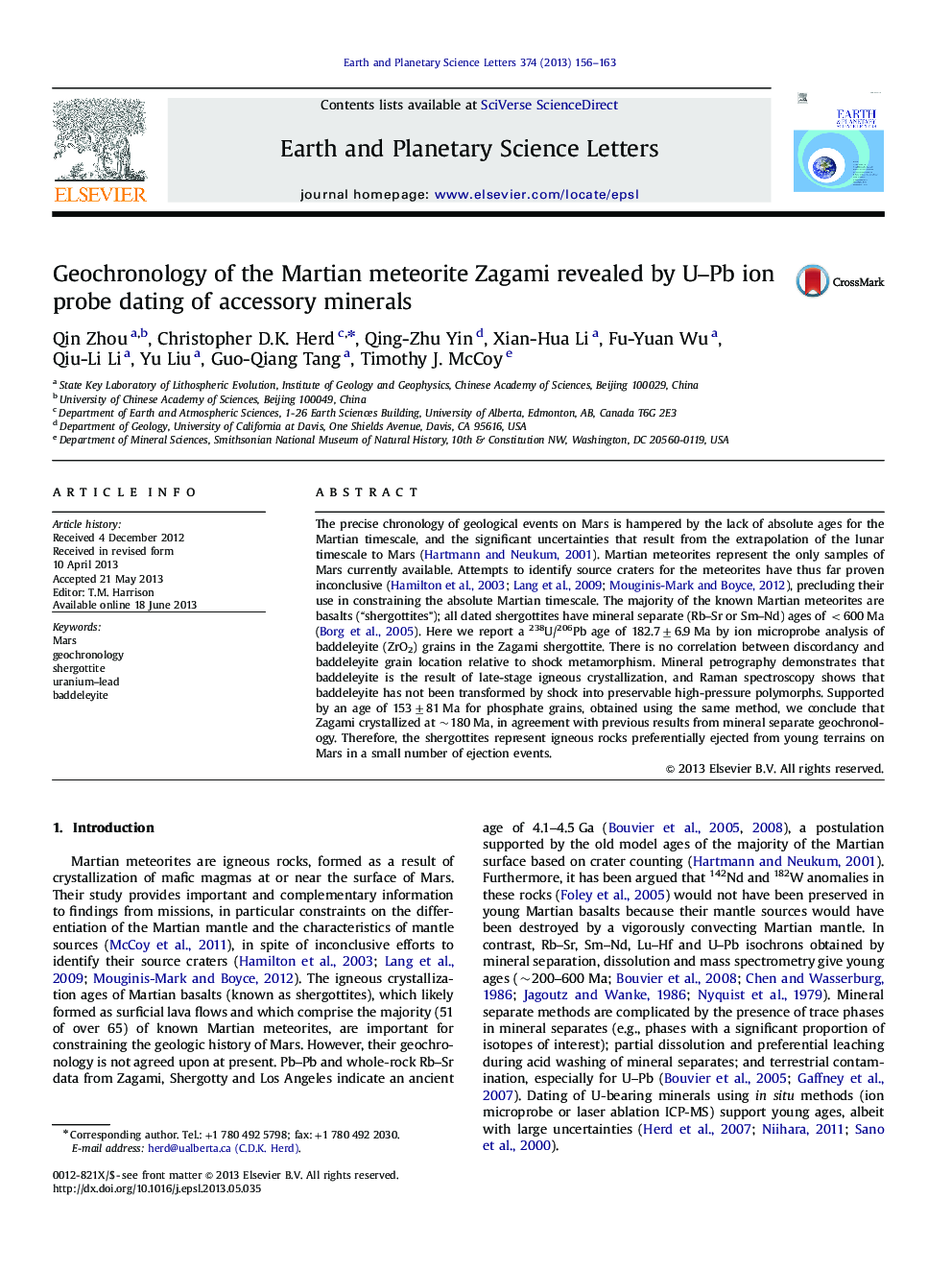| کد مقاله | کد نشریه | سال انتشار | مقاله انگلیسی | نسخه تمام متن |
|---|---|---|---|---|
| 6430145 | 1634781 | 2013 | 8 صفحه PDF | دانلود رایگان |

- In situ analysis of baddeleyite in the Zagami meteorite yields a precise U-Pb age.
- The method improves upon traditional geochronology by avoiding common Pb.
- The age we obtain agrees with mineral separate ages using other radiogenic systems.
- We conclude that the age (182±7 Ma) reflects the crystallization age of Zagami.
- Our results support the meteorites having been preferentially ejected from young terrains on Mars.
The precise chronology of geological events on Mars is hampered by the lack of absolute ages for the Martian timescale, and the significant uncertainties that result from the extrapolation of the lunar timescale to Mars (Hartmann and Neukum, 2001). Martian meteorites represent the only samples of Mars currently available. Attempts to identify source craters for the meteorites have thus far proven inconclusive (Hamilton et al., 2003; Lang et al., 2009; Mouginis-Mark and Boyce, 2012), precluding their use in constraining the absolute Martian timescale. The majority of the known Martian meteorites are basalts (“shergottites”); all dated shergottites have mineral separate (Rb-Sr or Sm-Nd) ages of <600 Ma (Borg et al., 2005). Here we report a 238U/206Pb age of 182.7±6.9 Ma by ion microprobe analysis of baddeleyite (ZrO2) grains in the Zagami shergottite. There is no correlation between discordancy and baddeleyite grain location relative to shock metamorphism. Mineral petrography demonstrates that baddeleyite is the result of late-stage igneous crystallization, and Raman spectroscopy shows that baddeleyite has not been transformed by shock into preservable high-pressure polymorphs. Supported by an age of 153±81 Ma for phosphate grains, obtained using the same method, we conclude that Zagami crystallized at ~180 Ma, in agreement with previous results from mineral separate geochronology. Therefore, the shergottites represent igneous rocks preferentially ejected from young terrains on Mars in a small number of ejection events.
Journal: Earth and Planetary Science Letters - Volume 374, 15 July 2013, Pages 156-163